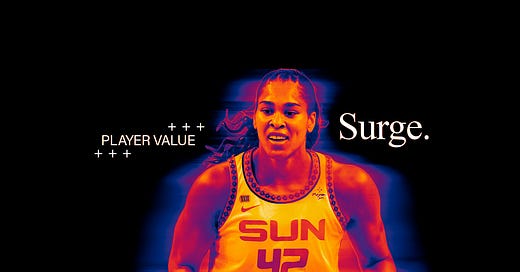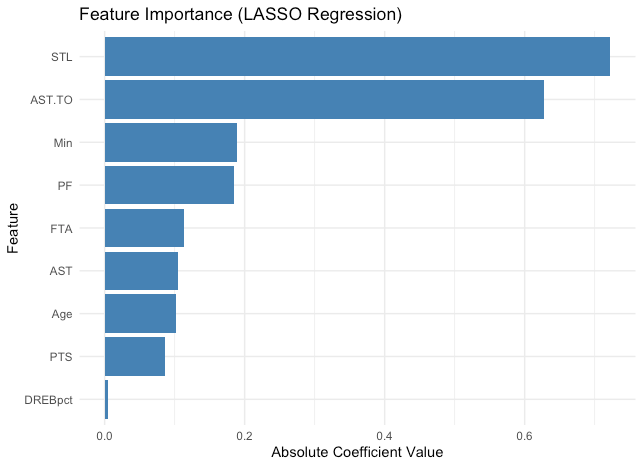As WNBA free agency heats up, much of the attention goes to a player's on-court performance. However, an equally crucial yet often overlooked factor is a player’s salary. This analysis predicts WNBA player salaries, offering a benchmark for comparison when they are officially revealed.
Jump To:
Creating Salary Predictions
When evaluating player salaries in professional sports, percentage of the salary cap is a key consideration. This analysis predicts the average annual value (AAV) of free-agent contracts, based on a player's stats from the year before free agency.
What the predictions are:
Estimating the AAV of free-agent contracts, based on individual player performance.
Why these predictions may deviate from actual contracts:
Length of contract: Due to potentially increased salaries in the near future, players may sign short-term deals more than usual this year.
Comparison to other free agents: The model focuses on capturing a player’s intrinsic value, not how many other free agents are available at the same position.1
Team cap space: The analysis doesn’t account for a team’s financial flexibility or potential to overpay.2
Not every free agent will sign with a team, but these predictions estimate what their contract would look like if they did.
These assumptions aim to capture a player’s true value, free from external factors like playing to win a championship or geographic preferences. Future articles will explore how real contracts compare to these predictions, considering these external factors.
Free Agent Projections
Discussion
Generally, these salary predictions align with general expectations, though a few top players may end up signing max contracts. I’d like the focus to be on the general predicted value, rather than nitpicking five or ten thousand dollars here and there.
Chennedy Carter remains a major question mark in free agency. Her talent is undeniable, and on the court, she’s proven to be a starting-caliber player. However, past locker room issues could impact her value, and it’ll be interesting to see how teams weigh those concerns in her salary.
Another notable point is the relatively small penalty the model applies for age. Women’s basketball players often find success at older ages, and all it takes is one team willing to take a short-term risk for veterans to command decent pay. It’ll be intriguing to see what the veteran players ultimately earn.
I’d love to hear others’ thoughts on where this model might have gone wrong. These predictions are just a starting point for discussion, and it's important to remember that they reflect potential salaries if players were signed to teams.
Methodology
I collected historical salary and performance data for WNBA free agents from 2020 to 2024 (for model training) and 2025 (projecting this year), using Spotrac data for contract details and WNBA.com’s player stats. Player salaries are expressed as a percentage of the league’s salary cap for standardization.
A Lasso regression model3 was used to predict the percentage of the salary cap allocated to players' contracts, with cross-validation to optimize the regularization parameter. The model showed fairly strong predictive power (R-squared = 0.5) and was used to estimate 2025 salaries. Feature importance is as follows. Note that variables are per 100 possessions, and AST.TO is the assist to turnover ratio:
If you have any additional questions, please don’t hesitate to reach out! I’d be happy to share the code, more information, or discuss further projects:
If there is scarcity at a position in free-agency, players in that position could be paid more that year. I use multiple years of data to help control for this.
Teams may have an incentive to overpay players this summer, with a potential salary cap increase on the horizon.
I used Lasso regression as I was concerned with:
Overfitting due to relatively small sample size
I wasn’t sure which variables would be most important.
Lasso was a great model as it helped solve both of these concerns.






